When renting a property, one of the most important aspects for both landlords and tenants is the security deposit. This deposit serves as a financial safeguard for landlords in case of any damages or unpaid rent, and it also provides tenants with the assurance that they will get their deposit back when they move out.
To ensure transparency and proper documentation, landlords often provide a security deposit refund receipt to tenants as proof that the deposit has been returned, or the remaining portion thereof, after they have vacated the rental property.
What is a Security Deposit Refund Receipt?
A security deposit refund receipt is a document that landlords provide to tenants as proof that their security deposit has been returned after they have moved out of a rental property. It serves as a record of the transaction and provides both parties with a written acknowledgment of the deposit refund.
The receipt typically includes details such as the tenant’s name, the property address, the amount of the original deposit, any deductions made, and the final refund amount.
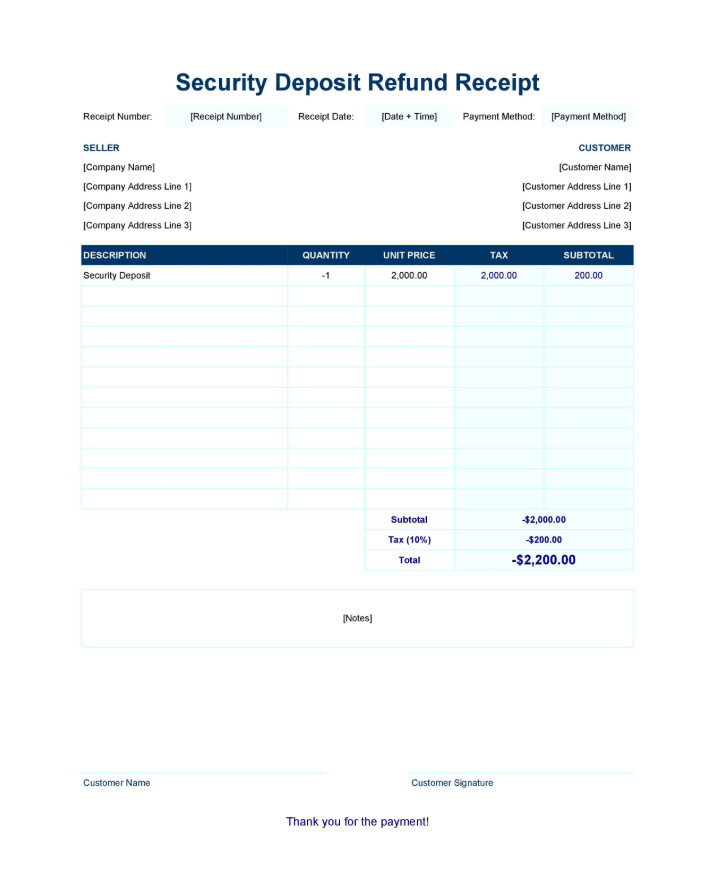
Why is a Security Deposit Refund Receipt Important?
Having a security deposit refund receipt is important for both landlords and tenants for several reasons:
- Legal Protection: The receipt serves as a legally binding document that protects both parties in case of any disputes or misunderstandings regarding the security deposit refund.
- Proof of Payment: It provides tenants with tangible evidence that their deposit has been returned, giving them peace of mind and ensuring transparency.
- Record Keeping: Landlords can use the receipt as part of their financial records to track security deposit refunds and maintain accurate accounting.
- Tenant Satisfaction: Providing a receipt shows professionalism and builds trust between landlords and tenants, enhancing the overall tenant experience.
How to Create a Security Deposit Refund Receipt
Creating a security deposit refund receipt is a straightforward process. Here are the steps to follow:
- Gather Information: Collect all the necessary details for the receipt, such as the tenant’s name, the property address, the original deposit amount, any deductions made, and the final refund amount.
- Choose a Template: There are various security deposit refund receipt templates available online. Select one that suits your needs or create your own using a word processing or spreadsheet software.
- Customize the Template: Fill in the required information in the template, ensuring accuracy and clarity. Add your logo or any additional branding elements if desired.
- Include Terms and Conditions: Include any relevant terms and conditions regarding the refund process, such as the timeframe for returning the deposit or the conditions for deductions.
- Review and Print: Double-check all the details on the receipt for accuracy and clarity. Print multiple copies of the receipt, keeping one for your records and providing one to the tenant.
Examples of Security Deposit Refund Receipts
Here are a few examples of what a security deposit refund receipt may look like:
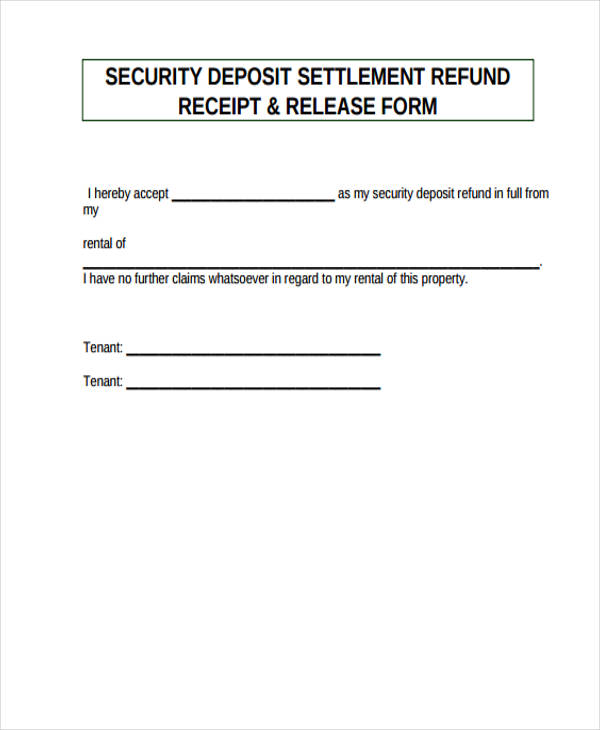
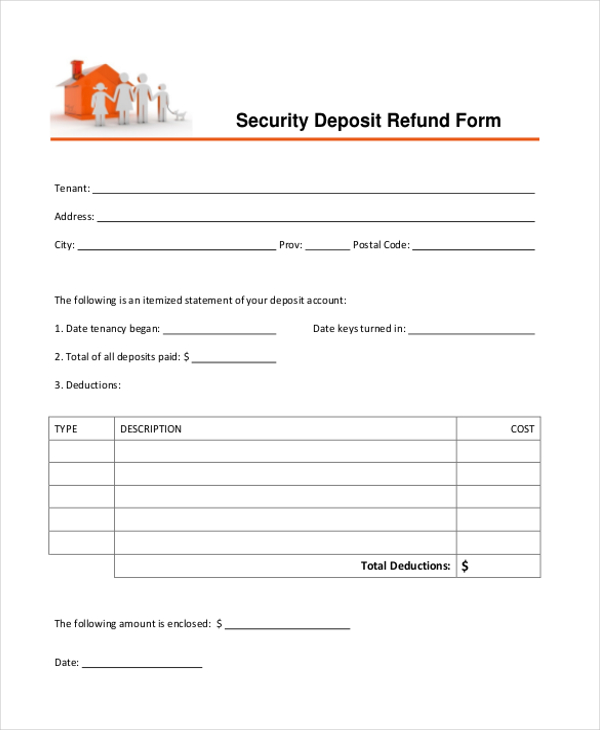
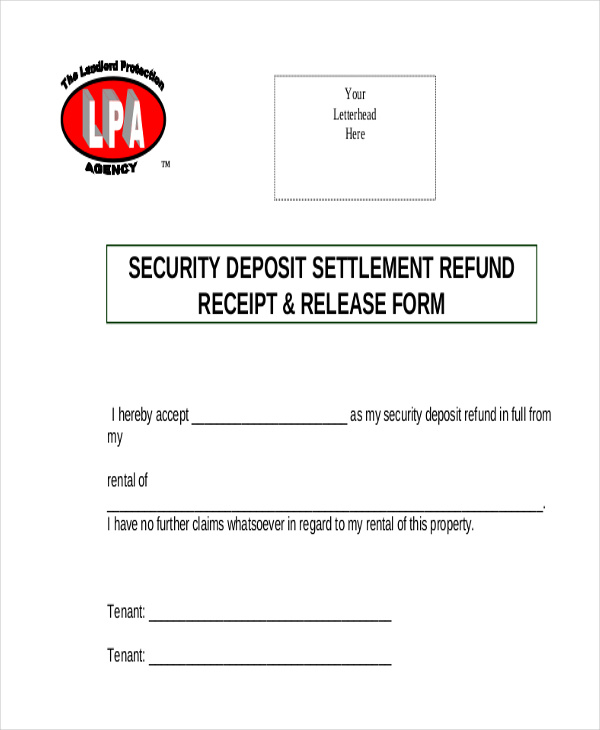
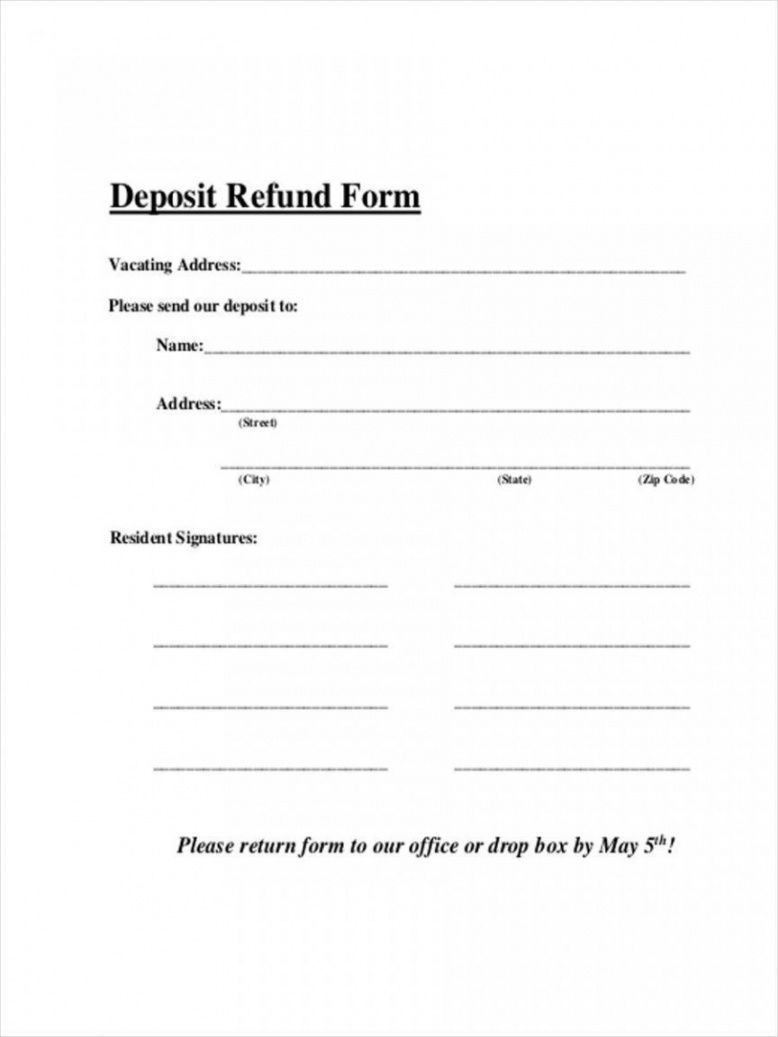
Tips for Successful Security Deposit Refunds
When it comes to refunding security deposits, here are some tips to ensure a smooth and successful process:
- Document Property Condition: Conduct a thorough move-in and move-out inspection, documenting the condition of the property with photos or videos to avoid any disputes regarding damages.
- Communicate Clearly: Communicate your expectations and the refund process to tenants, including any deductions that may be made and the timeline for returning the deposit.
- Keep Records: Maintain detailed records of all transactions, including the original deposit, any deductions made, and the final refund amount.
- Follow Local Laws: Familiarize yourself with the local laws and regulations regarding security deposits to ensure compliance and avoid legal issues.
- Be Prompt: Return the security deposit within the timeframe specified by local laws, typically within a certain number of days after the tenant moves out.
- Provide a Receipt: Always provide tenants with a security deposit refund receipt as proof of the refund, ensuring transparency and accountability.
- Seek Legal Advice if Needed: If there are any disputes or complex situations regarding the security deposit refund, consult with a legal professional to ensure you handle the situation properly.
Conclusion
A security deposit refund receipt is an essential document for both landlords and tenants. It serves as proof that the landlord has returned the tenant’s security deposit, or the remaining portion thereof, after the tenant has vacated the rental property.
By following the necessary steps to create and provide a receipt, landlords can ensure transparency, protect themselves legally, and provide tenants with peace of mind. Remember to document property conditions, communicate clearly, and follow local laws to ensure a successful security deposit refund process.
Security Deposit Refund Receipt Template – Download